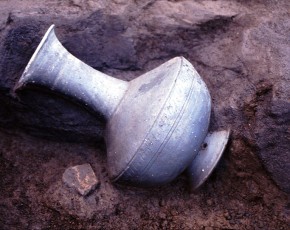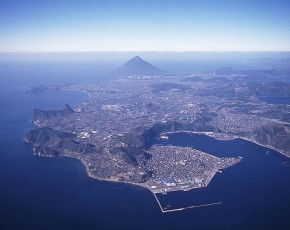History
■ The volcano’s eruption and its remains- “The Pompeii of the East”

・The Hashimuregawa Remains (nationally designated landmark)
The remains of Hashimuregawa were discovered in the village that was covered by an explosion by Mt Kaimon. It is a national treasure and was designated as such in 1924. It is often called the “Pompeii of the East”, after the internationally famous city of Pompeii in Italy, which was buried by Mt Vesuvius’ eruption.
On the 25th of March in the year 874, Mt Kaimon erupted, an event that was noted down in the government at the time’s historical record, ‘Nihonsandaijitsuroku’.
“On the night of the 25th of March, at the mountain peak where Kaimon Shrine can be found, flames rose and burned bright red. Thunder rolled, and eruption of smoke covered the sky and ash and sand fell. In the evening, rain came and the grain and corn withered and died. When we tried to establish why this happened, we decided it was due to the shrine’s dirty state. It is the curse of the gods. We gave the Kaimon gods a sacrifice.”
The shrine where this record can be found is now the tourism hotspot Hirakiki Shrine at the base of Mt Kaimon.
■ The Ocean’s Entrance- Ibusuki

As Ibusuki is situated at the most southerly point on the Satsuma Peninsula, since ancient times it has come to be used as the entrance to the open seas. In particular, Yamagawa port has flourished as an international trading town.
In 1546, the Portuguese merchant Alvares docked in Ibusuki and documented Japan in his “ Japan Report” from the perspective of a westerner.
Ibusuki was the first place in Japan to be introduced to the west.
In the modern Edo era, the local Satsuma feudal lords held Yamagawa port in high regard. Sea merchants travelled through the Ryugyu Kingdom (current day Okinawa), in charge of trade with China. Taheiji Hamasaki (1814-1863), whose bust can be seen in Ibusuki port, is famous as the wealthy merchant who commanded Japan’s highest-level naval fleet.





